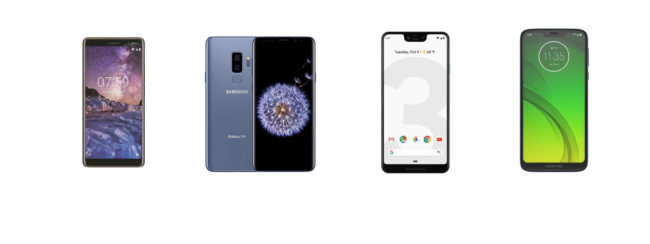Why tethering a smartphone to smart glasses is a good idea
From the beginning, Iristick has opted for a phone-tethered architecture for its smart glasses. This strategic decision was made to offer the user the best of both worlds: smart glasses that are powerful yet comfortable and light to wear, combined with the fast-evolving processing power of smartphones.
Application developers (in-house IT departments or standard software providers) can use their existing software development infrastructure to create powerful applications on a smartphone. At the back, Iristick connects these applications seamlessly to the additional hardware of the smart glasses, via a publicly available SDK.
Better long-term investment
The hidden beauty of this architecture lies in its long-term robustness and cost of deployment efficiency. Decoupling the smartphone (processing power) and the smart glasses (specific hardware) allows you to upgrade the smartphone when you need more processing power, without rendering the smart glasses obsolete. App developers are constantly increasing the demands on the processing power of smart glasses. Traditional architectures (which combine processing power and smart glasses in a single device) would require the complete hardware to be replaced, even if it is just more processing power that is needed. This makes the investment more expensive for organizations in the long run.
It is an evolution you see especially in the professional market, with high-end demands on the capacities of smart glasses (remote assistance, digital procedure/workflow support, pick-by-vision logistics). Almost all new generation smart glasses for industrial use on the market opt for this phone-tethered architecture.
Another advantage of concentrating all the processing power of the smart glasses in the tethered phone is that the radiation and heat dissipation caused by the processor is no longer located near the temple, thus minimizing the risk and discomfort for the user.
Cable: disadvantage or a must?
The disadvantage of having a cable connection to a smartphone is in most professional circumstances only a perceived disadvantage. If you want full shift capacity, then ALL smart glasses currently on the market require a cable connection to an external battery pack. You cannot change the laws of physics: current battery technology does not allow powerful applications to run for multiple hours without an additional battery. So either you compromise on application performance or you connect to an external battery.

Iristick.Z1 compatible smartphones
The Iristick architecture does not require a specific type of smartphone. Your company standard for smartphones will most likely be capable of running the Iristick smart glasses. To illustrate this, below is a list of smartphones that are currently in use by our customers. This is of course a non-exhaustive list. When you need more processing power, just add your smartphone to the list and you are good to go with the Iristick smart glasses.
If you have any specific questions on phone compatibility, please contact our support department at info@iristick.com.
2.4GHz Wi-Fi
- Motorola Moto G7 Play
- Motorola Moto G7 Power
5GHz Wi-Fi
- Google Pixel
- Google Pixel 3
- Motorola Moto G7 Plus
- Nokia 7 Plus
- Samsung Galaxy A8 (2018)
- Samsung Galaxy A50
- Samsung Galaxy S8
- Samsung Galaxy S9
- Samsung Galaxy S9+
This list is non-exhaustive and subject to constant re-evaluation. For the latest update, please contact support@iristick.com